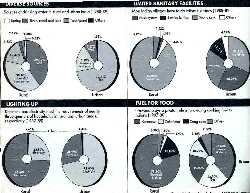Ways of lfie in rural and urban India
 Living conditions remain abysmally poor in India, with a big difference between urban and rural areas. Nearly three-quarters of urban households lived in pucca houses, compared to only about a quarter in rural areas. The difference between urban and rural households with an electricity connection is about the same.
Living conditions remain abysmally poor in India, with a big difference between urban and rural areas. Nearly three-quarters of urban households lived in pucca houses, compared to only about a quarter in rural areas. The difference between urban and rural households with an electricity connection is about the same.
Again, only about one-sixth of the rural households had access to tap water while the corresponding proportion in cities is about three-fourth. Groundwater alone meets the drinking needs of nearly 80 per cent of India's rural population.
Sanitary facilities are still very limited in the villages where nearly 90 per cent have no latrines, while in the urban areas, only about 31 per cent have to do without them. In cities, electricity meets the lighting needs of nearly three-fourths of the households. In rural areas, it is kerosene that meets this need.
Biomass sources such as firewood and dung cakes remain the principal cooking fuels in rural India. In urban areas, too, they remain the principal cooking fuel for more than 40 per cent of the households. Commercial fuels such as coal, kerosene and light petroleum gas are the principal fuels for just over half of the urban households.
